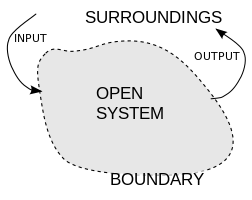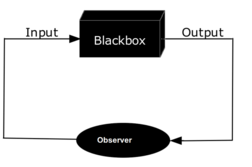唯識學
的
真帶質與假帶質
意義究竟是什麼?
坐脫立亡
張尚德
唯識學有個根本目的,就是在說一切存在,特別是人的存在,究竟是什麼。釋迦牟尼佛用個總的名稱做解答:
存在發生的起始、過程、流轉與歸結,是:
「阿陀那識」
由阿陀那識派生出人的阿賴耶識和種子識。
在唯識系統中,阿賴耶識是人的根本識,由之而生出第七末那識(情執)、第六意識和眼、耳、鼻、舌、身前五識。
識與根和塵混合在一起的功能作用,有四分:
相分、見分、自證分、證自證分。
下面依序解釋這四分:
一、相分:
「相分」就是你的主觀所緣的一切現象,也就是我們認識力的全體所知的一切存在之相,就叫相分。
二、見分:
「見分」就是能緣。即緣其所變相分之見照作用。你的主觀性認識功能、你整個心識的功能相互合作,起了能緣的作用,就叫做見分。
見分雖知相分,但見分不能自知見分,如刀不能自斬刀也,但我們的認識力有一種功能,就是別有知見分之用,此名自證分。
三、自證分:
首先說自證分就是為相分、見分所依。比如說:「是諸法空相」,這是相分,你看到或證到了「是諸法空相」,你的「證到」是見分;你這個相分、見分那裡來的?答案是:「自證分」。所以自證分是相分和見分所依。當然,這裡說證到「是諸法空相」,只是一種浮面的說法而已,並非深的或真的悟道。
其次自證分可以親證見分,你自己去證明,也就是你自己有這個主觀性的能力,可以更深一層的見到(證到)你原來的見分,叫做自證分。
四、證自證分:
證自證分能緣自證分,更深一層證到,自己更深一層的主觀性、認識力,用哲學的話來講,叫做最高的主觀統攝力,統攝自證分,就是能緣自證分。
另外,在唯識中有個重要概念,就是:
質
「質」的概念有兩方面意義:
物質的和心理的。
人的存在脫離不了主觀與客觀。從存在的客觀來講,最重要的是物質,也就是「色」,我們主觀的存在和認識,若落在物質上,就叫做「以心緣色」。用一個名稱,叫做:「以心緣色假帶質」。
又說:
「中間相分一頭生」。
意指完全是主觀落到物質上也,物質為「相」。
之所以說其為「假帶質」,有兩點:
一、 佛法強調「萬法唯心造」。
二、 「唯識三十頌」一開始就說:
「因假說我法、有種種相轉」。
另外,有所謂「真帶質」,那就是「以心緣心真帶質」。
「以心緣心真帶質」是第七識見分(心)抓第八識見分(心),成為第七識的相分,就是「以心緣心」。這種認識功能和心理作用叫做「真帶質」。阿賴耶識既是見分(主觀功能作用),也是相分(被第七識所抓)。
「以心緣心真帶質」,又說:
「中間相分兩頭生」。
意指第八阿賴耶識一旦被第七識所抓,那彼此就既為見分、又為相分也。
重要的是,學佛完全是自己極細緻且深入的去觀察自己的物質與心理的認識功能作用。認識的功能作用,絕對是在自己的腦細胞、和宇宙客觀合在一起的磁場、磁力相感應的。無盡變化功能的腦細胞,在億億萬萬分之一秒鐘,展示出腦波磁力所衍生的意識概念,與宇宙一切存在的磁力產生感應作用,這種感應,可以說比電子還要電子,華嚴經就是如此說的。在性狀程序過程上來說,要透過:
奢摩他(定)和毘鉢舍那(觀)的極致
也就是「瑜伽師地論」所講的菩薩道的認識與功夫所達到的成就,才能體認這一點。
從「金剛經」來說,要讓自己的身心進到「寂靜莊嚴」,才真能理解什麼是「以心緣心」和「以心緣色」。
此為自古以來每位真修行者所盼望而成就的。
能控攝腦波,就真能控制自己。
古之學者為己,今之學者為啥?
現代文明的浮躁,唯安眠藥才能控制腦波磁力。
歷代大禪師之所以在談笑風生中,坐脫立亡:
此也!
附語:
觀音法門的最高峰是:
上與諸佛菩薩同一慈力。
宇宙萬有存在的淨之磁力,是與心能慈力相通的,此所以真正心物一元也。
坐脫立亡的根本道理,完全在能控制自己的腦波磁力。重要的是,頭底中央囪門要與宇宙萬物磁力相通。達此境界,即能超越地水火風四大。此所以心經說:
照見五蘊皆空,度一切苦厄。
二零一三年十月二日
於台灣達摩書院








